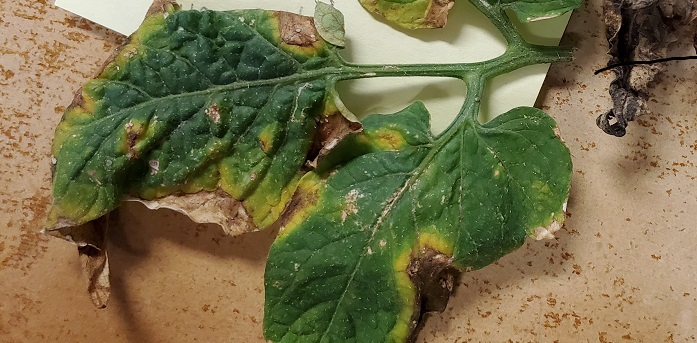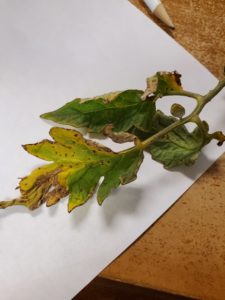What is Early Blight?
Early Blight is a common fungal disease of tomatoes caused by the fungal organism Alternaria solani. As with most diseases, stressed plants or plants in poor health are more susceptible. This disease can also affect potatoes.
The Early Blight fungus generally starts at the bottom of the plant, affecting leaves, stems, and fruits. Dark spots with concentric rings develop on the leaves, and if the fruit is affected spots begin at the stem end, forming a dark sunken area with concentric rings.
How do we prevent Early Blight?
The fungus often overwinters in debris from the previous season in the soil. Since the fungus can persist for at least one year in the soil, crop rotation is quite important.
Remember to rotate plant FAMILIES. Tomatoes, potatoes, peppers and eggplant are all in the same family, so rotating southern peas, corn, squash, etc. will go a long way in preventing disease from recurring every year. Try to rotate so that the same plant family is only in the same area of the garden for one out of every three years.
Another helpful practice is to remove the lower leaves of the tomato plant as the plant grows, so that the bottom foot of the stem is bare. This will prevent fungal spores from splashing up on the bottom leaves when it rains.
Avoid overhead irrigation and use drip irrigation when possible. Overhead irrigation can splash fungal spores up on the bottom leaves of the plant, and wetting the leaves provides an environment conducive to fungal growth.
Plant your tomato plants far enough apart that they receive good air circulation.
Plant resistant varieties. There are a just a few resistant varieties, with Juliet being the most popular. Mr. Stripey aka Tigerella, Black Plum and Legend are some others.
How do we control Early Blight?
If you see infection on just a single plant, consider removing that plant to prevent spread to your other tomato plants.
Remove and dispose of any affected plant parts, especially before spraying, and be sure to disinfect pruners between plants.
Copper sprays can slow or prevent the spread. Thorough coverage of the tops and undersides of the leaves is important.
Remember to practice good sanitation in the garden, rotate crop families and avoid overhead irrigation and you will be less likely to have disease issues.

